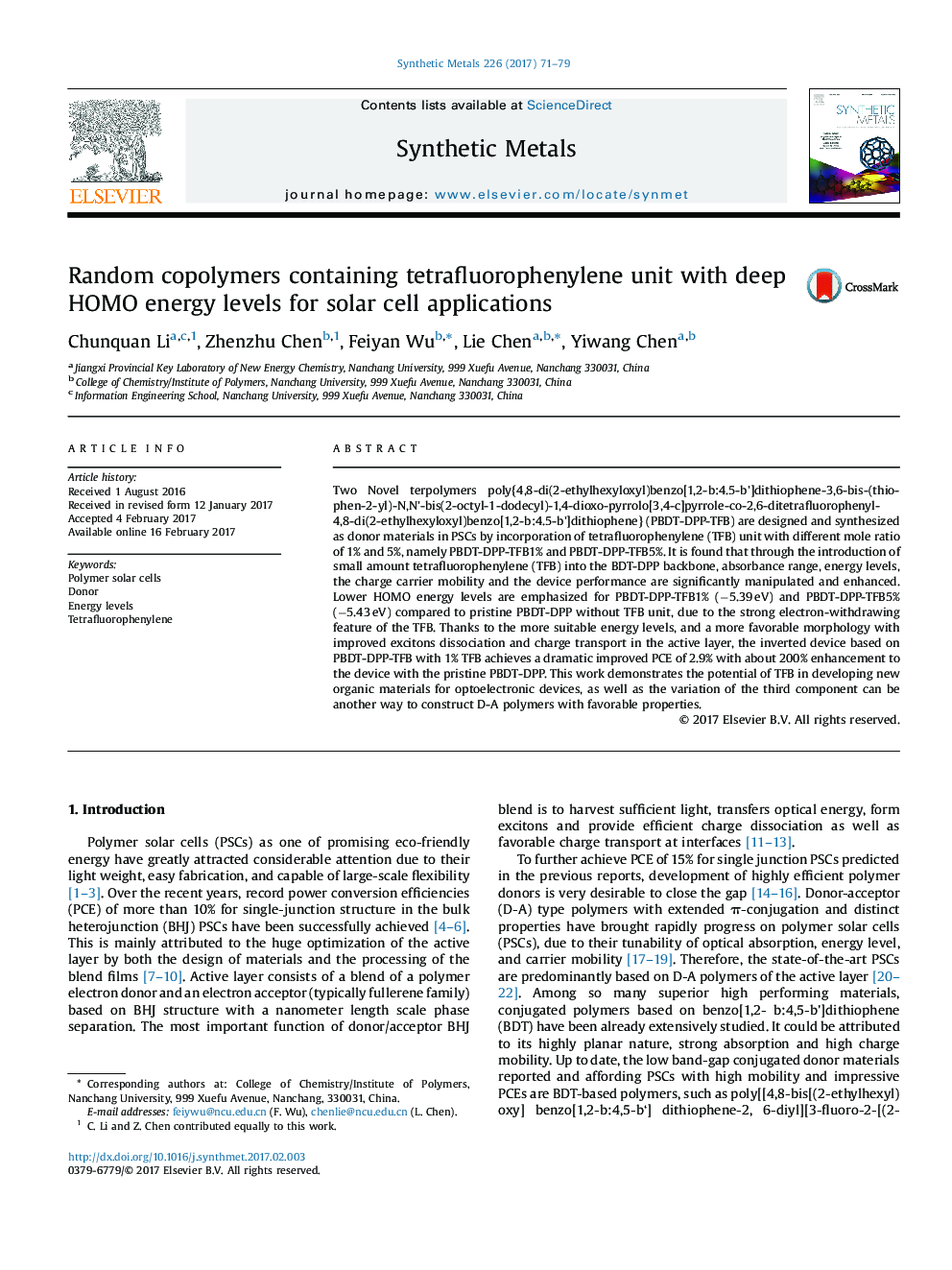| کد مقاله | کد نشریه | سال انتشار | مقاله انگلیسی | نسخه تمام متن |
|---|---|---|---|---|
| 5435479 | 1509352 | 2017 | 9 صفحه PDF | دانلود رایگان |

- Random polymers containing different ratio of tetrafluorophenylene (TFB) Unit on the backbone were prepared.
- Two random polymers showed lower HOMO of â5.39Â eV for PBDT-DPP-TFB1% and â5.43Â eV for PBDT-DPP-TFB5%.
- The introduction of small amount tetrafluorophenylene (TFB) into the BDT-DPP backbone, absorbance range, energy levels, the charge carrier mobility and the device performances are significantly manipulated and enhanced.
Two Novel terpolymers poly{4,8-di(2-ethylhexyloxyl)benzo[1,2-b:4.5-b']dithiophene-3,6-bis-(thiophen-2-yl)-N,N'-bis(2-octyl-1-dodecyl)-1,4-dioxo-pyrrolo[3,4-c]pyrrole-co-2,6-ditetrafluorophenyl-4,8-di(2-ethylhexyloxyl)benzo[1,2-b:4.5-b']dithiophene} (PBDT-DPP-TFB) are designed and synthesized as donor materials in PSCs by incorporation of tetrafluorophenylene (TFB) unit with different mole ratio of 1% and 5%, namely PBDT-DPP-TFB1% and PBDT-DPP-TFB5%. It is found that through the introduction of small amount tetrafluorophenylene (TFB) into the BDT-DPP backbone, absorbance range, energy levels, the charge carrier mobility and the device performance are significantly manipulated and enhanced. Lower HOMO energy levels are emphasized for PBDT-DPP-TFB1% (â5.39Â eV) and PBDT-DPP-TFB5% (â5.43Â eV) compared to pristine PBDT-DPP without TFB unit, due to the strong electron-withdrawing feature of the TFB. Thanks to the more suitable energy levels, and a more favorable morphology with improved excitons dissociation and charge transport in the active layer, the inverted device based on PBDT-DPP-TFB with 1% TFB achieves a dramatic improved PCE of 2.9% with about 200% enhancement to the device with the pristine PBDT-DPP. This work demonstrates the potential of TFB in developing new organic materials for optoelectronic devices, as well as the variation of the third component can be another way to construct D-A polymers with favorable properties.
198
Journal: Synthetic Metals - Volume 226, April 2017, Pages 71-79